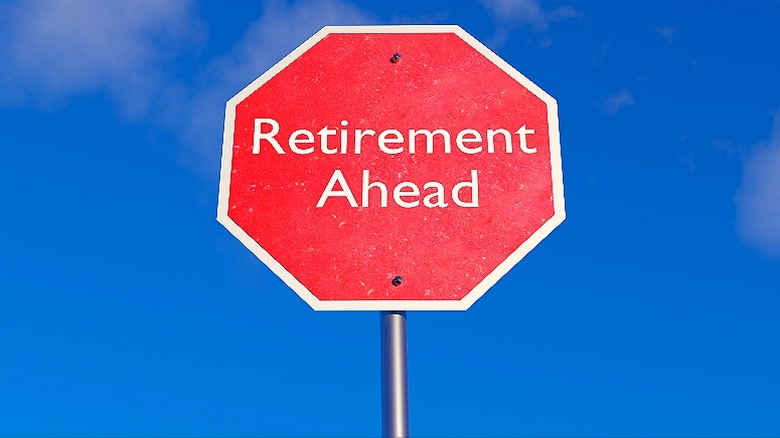Expect An Above-Average COLA If Your Social Security Check Beats This Number
Social Security checks are a monthly benefit paid to retirees. It's paid back (in a sense) to retirees in thanks for their hard work through many years in the rat race beforehand. Generally, Americans will see themselves enter the workforce in earnest after leaving high school or collegiate studies, remain employed for most of the next 40 years, paying into the Social Security program along the way, and then retire to enjoy their golden years in peace.
The math is a little more complex than a simple age marker, though. First off, full retirement age is pegged at 66 or 67, depending on the year you were born, but taking Social Security benefits early is on the table (as early as 62), as is waiting to start drawing benefits (as late as 70). There are benefits to both early and late starts to Social Security draws, but one of the factors every American should consider is the COLA figure that comes out every year.
Those already receiving their Social Security checks will understand this term well, but Americans still in the retirement-planning phase might not be familiar with the concept of COLA, which stands for cost-of-living adjustment. It's a key feature in solid Social Security strategy, so knowing where you stand here can make a huge difference in your retirement finances going forward.
The average Social Security check
Social Security payments aren't written in stone. The whole system is fluid (with the potential for reduced Social Security benefits a decade or more into the future), and one way that this can be seen is in the yearly cost-of-living adjustment, or COLA. Checks are increased by a set COLA percentage every year to account for inflation and other increases in the cost of living. The result is a program that grows with retirees as the marketplace of goods and services changes around them.
The COLA increase for 2025 will be announced on October 10 and looks to be estimated at 2.5%. This means that if your monthly Social Security check comes out to $1,000, next year you'll receive $1,025 per month. COLA is assessed every year and tacked onto every beneficiary's checks without them having to do anything. But COLA rate changes aren't uniform. Rather than coming as a set rate increase (adding, say, $50 to every beneficiary's monthly check), it's instead assessed as a percentage. This is important because everyone's benefit figure will be different. That said, the average Social Security monthly benefit as of August 2024 is $1,920, resulting in a $48 increase if the 2.5% figure holds true.
If you receive a larger benefit, you'll be entitled to a larger increase, ballooning the value of your benefits over time. To put it another way, two people drawing Social Security for the last few years at different rates would see somewhat dramatic changes to their benefit. If John received $1,500 per month in 2020 versus Tim's $1,400, their 2021 checks would only differ by an extra dollar, but by 2025 John would be drawing $123 more than his friend per month ($1,850.25 versus $1,726.90, based on SSA's adjustment history).
Social Security math
If you're already drawing Social Security checks, there are actually a few Social Security rules that can help you reset the clock (if that's something you want to do) to increase the benefit you gain from annual COLA alterations. But for those who haven't yet retired, waiting to start taking benefits is the best way to ensure you get the most from your monthly checks, both in the beginning and over the long term.
The diverging trend lines only get farther apart as time goes on when comparing two similar Social Security check values at their start. It's simple math really, the more your principal value, the greater increases you'll expect to see when applying a percentage-based change. Compounded over many years of retirement, and the difference can be truly staggering. It's therefore a good idea to check in with your Social Security account from time to time to see how much you'd be entitled to based on your draw options.
Remember, starting early comes with a penalty — a 70% benefit rate for those who start drawing Social Security at age 62 — while waiting to draw until you're 70 provides you with a 124% payout figure in relation to your calculated "full" benefit. This being said, if staying ahead of the curve is all you're looking to achieve with Social Security, considering the average check figure and calculating when you'd surpass that rate can act as your guiding light. (Read about three changes coming to Social Security in 2025 and what it means for retirees.)


